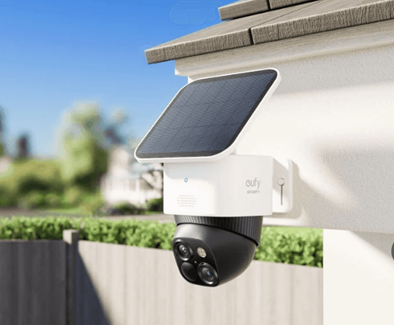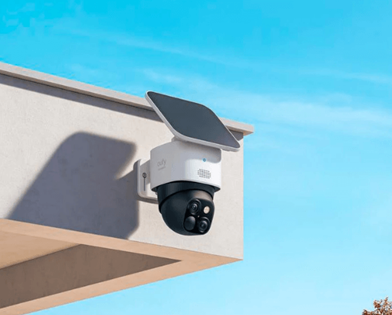Highlights
As the UAE turns into a model of public health crisis management for its Covid-19 response, Alaa Adel, Vice President and Managing Director in Middle East and Africa (MEA) at Cerner, shares insights into healthcare trends and developments in the region
Healthcare is one of the most essential and dynamic industries, and the need for improved outcomes, quality, accessibility, and affordability is creating new opportunities and driving innovation in this field.
The pandemic has challenged even the most advanced healthcare systems, and each new variant exacerbates this strain on resources. While there is constant pressure on an already-stretched healthcare sector to be consistently on the front-foot, the excellent work that the UAE government has done in response to the pandemic is a model in this regard. According to the 2021 UAE Healthcare Report, the UAE Government’s Covid-19 response has resulted in the country being ranked among the top-performing countries globally, and one of the highest performing in the Arab world.
New developments
The healthcare landscape in the UAE has changed significantly during this public health crisis, with new trends and developments across the country.
“The first thing we’re seeing is a shift from reactive healthcare to proactive healthcare,” says Alaa Adel, Vice President and Managing Director- MEA at Cerner. “There is a shift in focus from the mere provision of care to the overall wellness of the patient, and we’re also seeing a move from patient-centric care to consumer empowerment. That means the hospitals and organisations covering the healthcare sector in the UAE are enabling individuals to take care of their health before they even become patients.”
Today, patients as consumers are more educated on their conditions and how to take care of themselves. The emphasis on hospital healthcare has also moved from hospitals to community centres, which means services are no longer limited to the four walls of a hospital. Through advancements in technology, and specifically telehealth, anybody can have access to world-class healthcare in the comfort of their home.
“Players in the UAE market are not only focusing on quality, but also the demand for excellence in service provision to ensure that patients receive the value of investments in healthcare,” says Adel. “Furthermore, the advancements in telemedicine allow patients the flexibility to access critical services from anywhere through the use of interactive connectivity apps. We have observed increased adoption of this trend during the last two years, fighting the pandemic.”
Artificial Intelligence (AI) is definitely one of the most talked about technology trends in the UAE and it has significant implications for healthcare, particularly in the way it is evolving and identifying patients at risk. By way of example, AI

can automatically remind patients to take medication or undergo health testing in a timely manner.
“We have also seen more personalized medicine being delivered to patients,” explains Adel. “When all the data is in one place, AI can suggest treatment, tests and practices that are adapted to people’s requirements. And now we’re moving again to proactive healthcare, as opposed to reactive. We’ve also noticed something new, which I would refer to as the internet of medical things, whereby medical devices are able to talk to each other more intelligently. Through the advancements of 4G and 5G technologies, they can connect faster, and in a more reliable manner, allowing telemedicine and providers of healthcare to review the condition of patients in real time, share and analyze information and provide effective treatments. This internet of medical things also enhances operations and creates efficiencies in the way healthcare is provided in hospitals.”
Tech in healthcare
New innovations and technology are transforming medicine faster than ever. There is effective care coordination across organisations and hospitals through enhancements in patient communication and education, as well as the integration of devices to improve care. An example of that, says Adel, is the smart facility built at one of Cerner’s client sites. The smart facility implementation involved the automation of multiple clinical workflows. In addition, devices including patient TV monitors, vital sign machines and electronic room signage were all integrated. More than 2,500 medical devices and 30 clinical systems worked together to process 35 million transactions a day across clinical and non-clinical systems. “Advancements in healthcare technology have also allowed the workflow and taking care of patient to be done in a very autonomous way, which in turn advances the patient experience. Streamlining the flow of communication between patients, nurses, physicians and supporting staff has improved patient outcomes and created a significant improvement in patient satisfaction,” he says.
“We’ve also seen a big improvement in population health management, which can be understood as the provision of care to a population set within a larger population. It prevents patients from coming to the hospital by taking care of them in the comfort of their homes. This frees up resources in the healthcare system, allowing hospitals to focus on critical admissions. The pandemic has underscored the importance of reducing unnecessary hospital visits. I think, as a community, we need to take care of our health and use technologies available to us to prevent hospitals from being over-burdened by patients.”
The internet, mobile technology, and telemedicine enable caregivers to take care of a patient without having to physically go to the hospital or the clinic. New educational programs, whether through apps, videos, or text reminders, are all giving patients the options to customize their healthcare. “Technologies and innovation in healthcare can drive economic growth by improving efficiency and increasing productivity,” says Adel.
“The caregivers of our clients now work not just from healthcare facilities, but also remotely and from their homes. We are no longer limited to the physical location of our employers, or to the previous way in which things were done. The advancement and innovations that happened in healthcare specifically over the last two years are here to stay. I believe that we will see increased adoption in virtual and remote care for individuals, and the Middle East wearable market will continue to expand.”
Challenges in the region
While the region is quick to adopt new technologies when compared to other parts of the world, current estimates, according to the World Future Energy summit, suggest that the combination of long-term public health concerns and preparations for combating epidemics will cause the UAE’s expenditure on healthcare to rise to $26 billion by 2028.
“Adoption of innovative modern technologies in combination with healthcare best practices is required to enhance patient care and deliver the highest quality of service,” says Adel. “As with other players in the healthcare sector, healthcare insurers have also undergone massive changes during the Covid-19 period. The shift from regular episodic care to more preventive services, vaccinations and testing has changed their focus as well. Once again technology, especially health information technology, has proved crucial. The changes are here to stay, with newer ways of accessing and providing care. Insurers have had to adjust their reimbursement models to include virtual and remote services.”
Disease management
The intersection of technology and medicine has resulted in treatments that fit better into our daily routines, promoting adherence and guiding patients toward improved outcomes. Companies in the healthcare industry are in step with this, producing digital solutions that aim to help improve health outcomes.
As an example of how technology is helping in chronic disease management programs, clinical decision support (CDS) systems are helping providers to interpret clinical results, document the health status of patients and prescribe medications through the use of alerts, reminders, and customized data entry forms. Health information exchanges (HIE) allow organizations to share information across organizational boundaries.
“Such systems enable all participating providers in a community to access patient information and provide better patient care,” says Adel. “Disease registries capture and track key patient information to assist care team members in proactively managing patients.”
Electronic health records with integrated decision support and chronic care management tools help providers manage patient information and monitor health outcomes for patients who are undergoing treatment for chronic diseases.“EHRs integrated with laboratory and pharmacy information systems can supply important information in support of chronic disease management programs,” says Adel.
Going forward, the changes in healthcare brought about by the pandemic in terms of adoption of new technology, notably telemedicine, are here to stay. Healthcare providers will also have to look at dynamic patient management systems. This is both a challenge and opportunity. The new normal demands seamless integration of medicine and technology.









